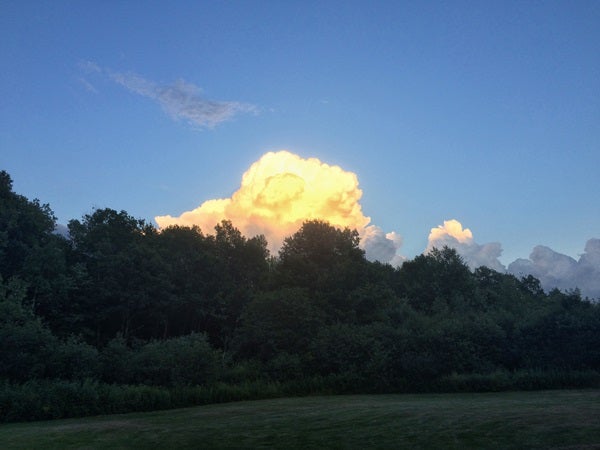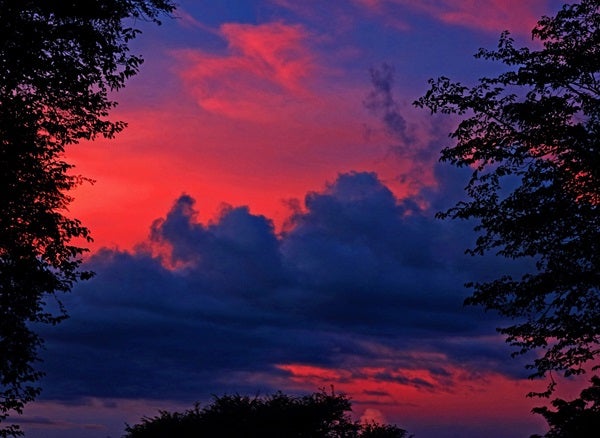Observers call this faint glow “earthshine,” and it is one of the most beautiful sights that emerges from the twilight sky. But there’s another visual paradox related to Earth and sky that can emerge during twilight and briefly turn shadow into light by a similar feat of natural magic.
Twilit twist
One night during Botswana’s rainy season, we had a thunderstorm that ended shortly before sunset, which then occurred in a clearing sky. In its dying gasps, the Sun tossed long golden spears into my garden and bathed the trees to the east in its delicious nectar against a slate gray sky. The world seemed in balance — until the Sun set and twilight deepened. Then it happened.
I remained perplexed until I stepped out from under the eave, turned around, and saw a single towering thunderhead poking its head high above the slate gray clouds. The cloud tops were high enough to still catch rays from the Sun, which had already set from my terrestrial perch.
The contrast between the darkening sky and the thunderhead created a perfect situation: Light reflecting off the thunderhead (I called it “cloudshine”) illuminated the garden with enough intensity that trees could cast shadows on the garden wall in the sunward direction.
Some time after this sighting, Rick Kostelnik of North Yarmouth, Maine, wrote to me saying he had seen a “very interesting phenomenon” July 22, 2016, that he had never seen before. He and his young son, Xander, were outside golfing. The Sun was near setting in the west, and some thunderstorms were rolling through the east; one of the clouds, Rick noticed, appeared extremely bright.
Returning to his game, Rick faced west and was about to hit his golf ball when he noticed that his body cast a shadow on the ground where his ball was sitting. The shadow, he realized, was coming from a light source in the east, which, he surmised, could only have been the cloud. “I had never seen a shadow from a cloud that was so bright before,” Rick continued. “I have obviously seen shadows from a Full Moon and probably from Jupiter or Venus at night, but a shadow from a cloud during the daytime really surprised me.”
Now that it is summer in the Northern Hemisphere, when thunderstorms become prevalent, keep an eye open for this intriguing phenomenon. I’d love to hear of others’ experiences. Send any thoughts or observations to sjomeara31@gmail.com.












